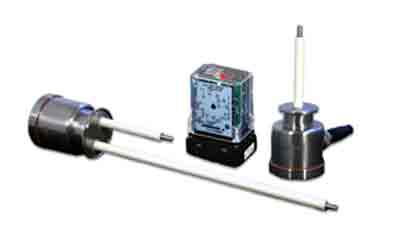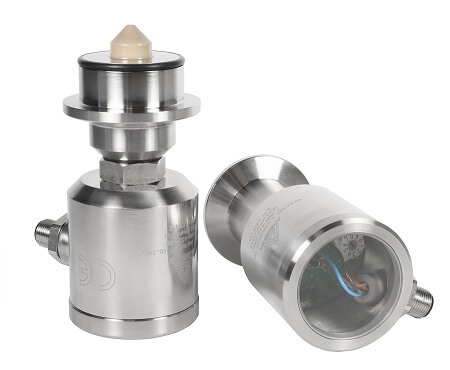A point level switch detects that a defined filling level (max. or min.) has been reached and emits a switch signal for process control. Find here tailored solutions for beverage and food processes and the pharmaceutical ...

Conductive point level probe for use with external relay modules

Life Sciences series capacitive point level switch for liquids
Precise content detection with point level sensors is an essential basis for maximum process and application reliability. This prevents efficiently pumps from dry running or vessels from overflowing and helps to automate filler applications with minimum product loss due to precise full / empty signals. With its comprehensive product range in this applications sector Anderson-Negele level sensors always offer the most suitable measuring technology for virtually all hygienic applications and even for foaming or pasty media.
While the measuring electrode of the sensors and the vessel wall form the capacitor plates, the liquid becomes the dielectric medium. Due to the superior permittivity (dielectric constant) value of the medium compared to air the capacity increases by growing coverage of the electrode. The alteration of capacity is measured by the electronic devices of the capacitive level sensor and transformed into a switch command.
A point level switch detects that a defined filling level has been reached and emits a switch signal for process control. As a manufacturer of sensors operating with a wide variety of measurement technologies Anderson-Negele provides tailored solutions for beverage and food producers and the pharmaceutical sector. The capacitive or the conductive measuring method are mostly used for the point level applications. Single or Multi-rod versions, specific coatings or versions for strongly adhesive media ensure that even with most difficult products such as cream, kechtup, oils, alcohol and many others there is always a reliable and precise point level measurement solution.
The capacity of a condenser is determined principally by three factors. The distance and the dimension of the electrode surface and the type of dielectric fluid between the electrodes. In case of capacitive level measurement by means of a probe only the type of dielectric fluid is crucial.
Foaming and adhesive products in food and drink production processes make a real challenge for the level sensor technology.
The solution by Anderson-Negele:
The capacitive operating mode requires a full coverage of the PEEK sensor tip by the medium. This fact guarantees that the sensor doesn’t respond to foam or adhesions but only reacts if the actual infill level of the medium reaches the position of the sensor tip.
Copyright © 2022 Anderson-Negele